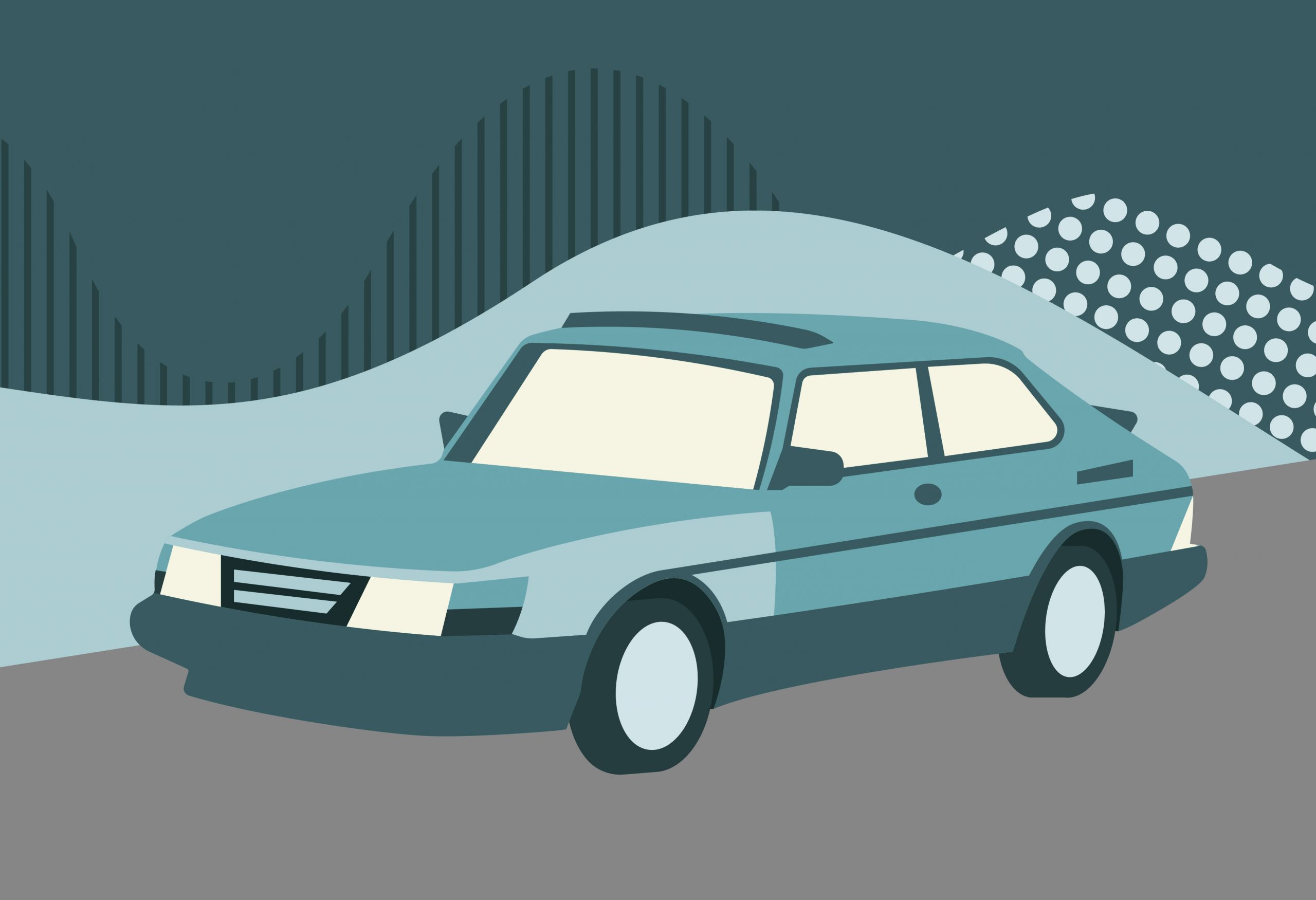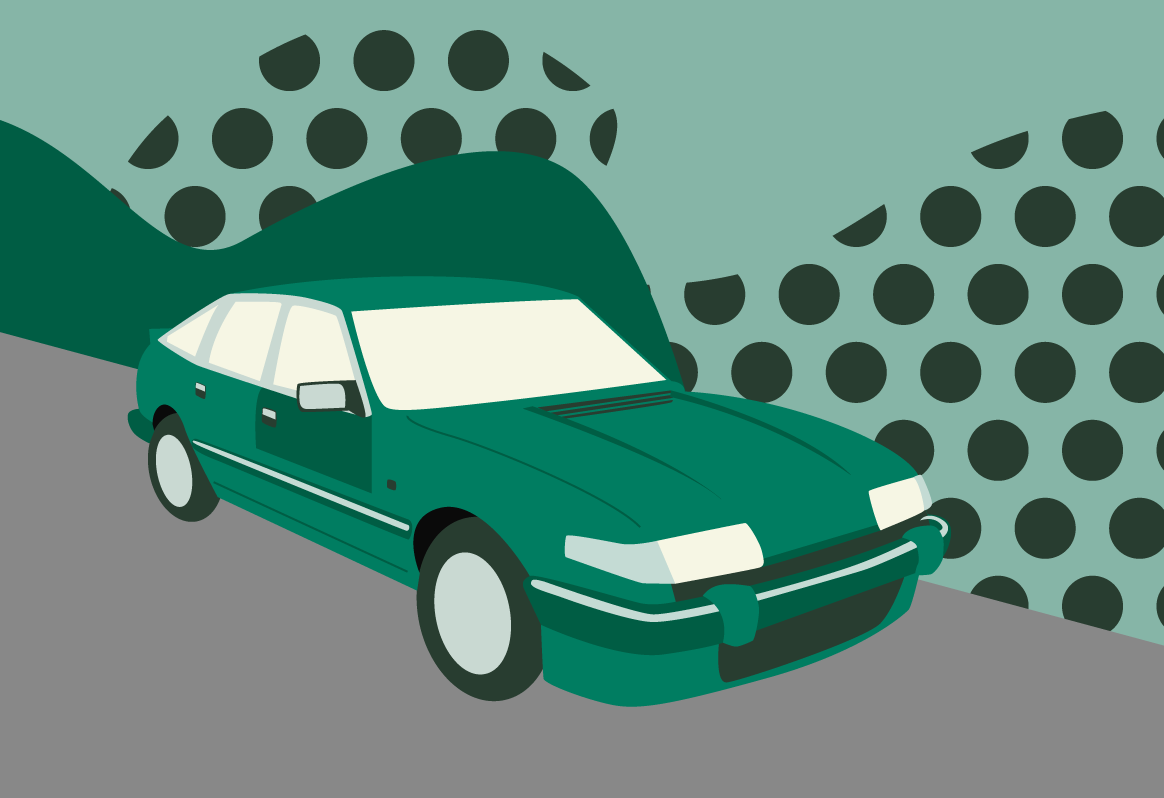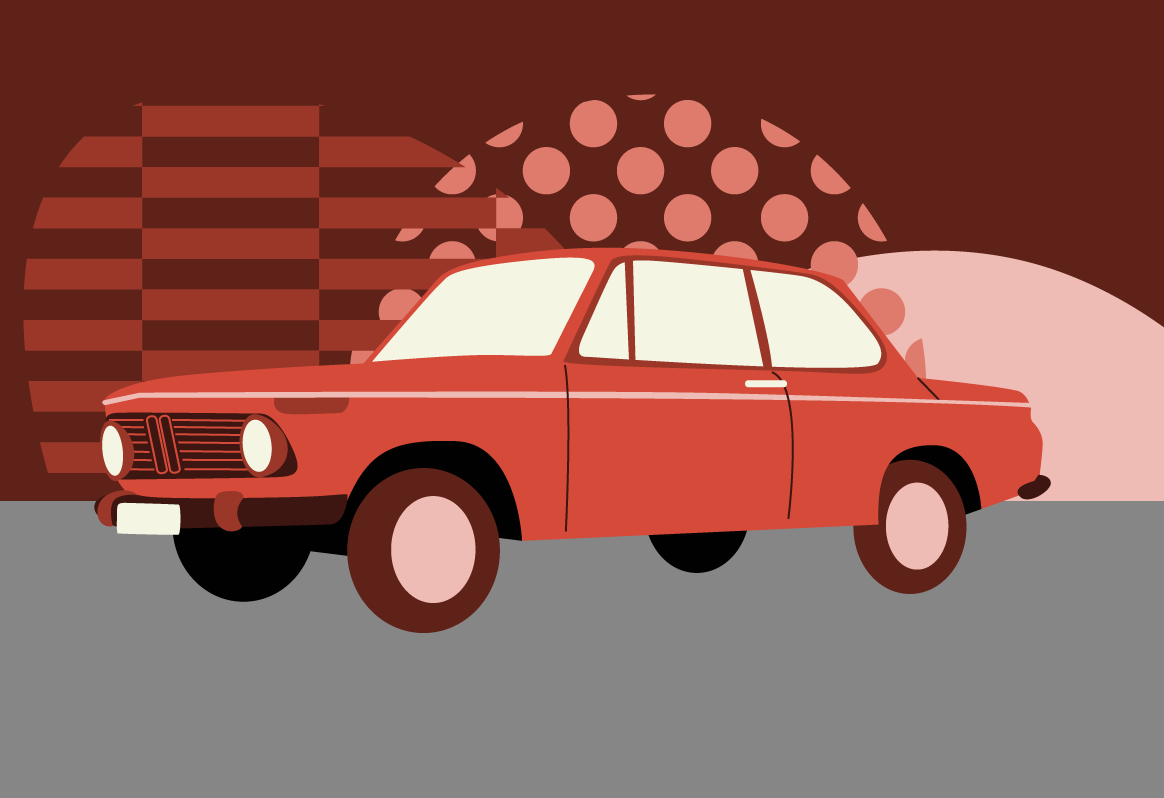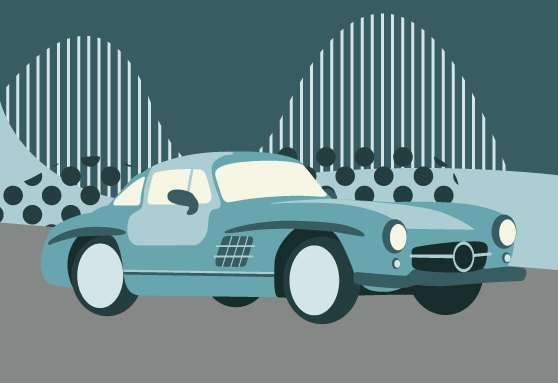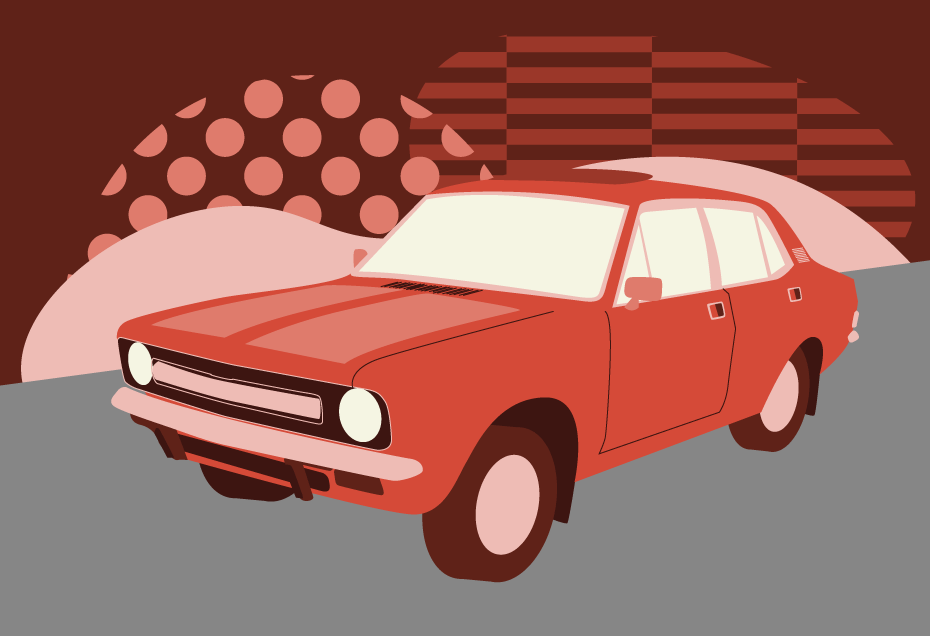The Saab 900 Turbo was the car that truly popularised mainstream turbocharging, transforming a mid-sized family car into a missile with supercar overtaking powers.
It built on the success of the 99 Turbo, the world’s first mass-produced turbo car, and its unusual design, clothing equally unusual engineering, made it one of the more fascinating cars of its era.
Saab’s biggest-selling car, we look back at what made it so great.
Saab’s 99 saloon had been doing very nicely for nearly a decade when, for the 1978 model year, engineers at Trollhättan added a Garrett turbo to its Triumph-derived slant-four engine.
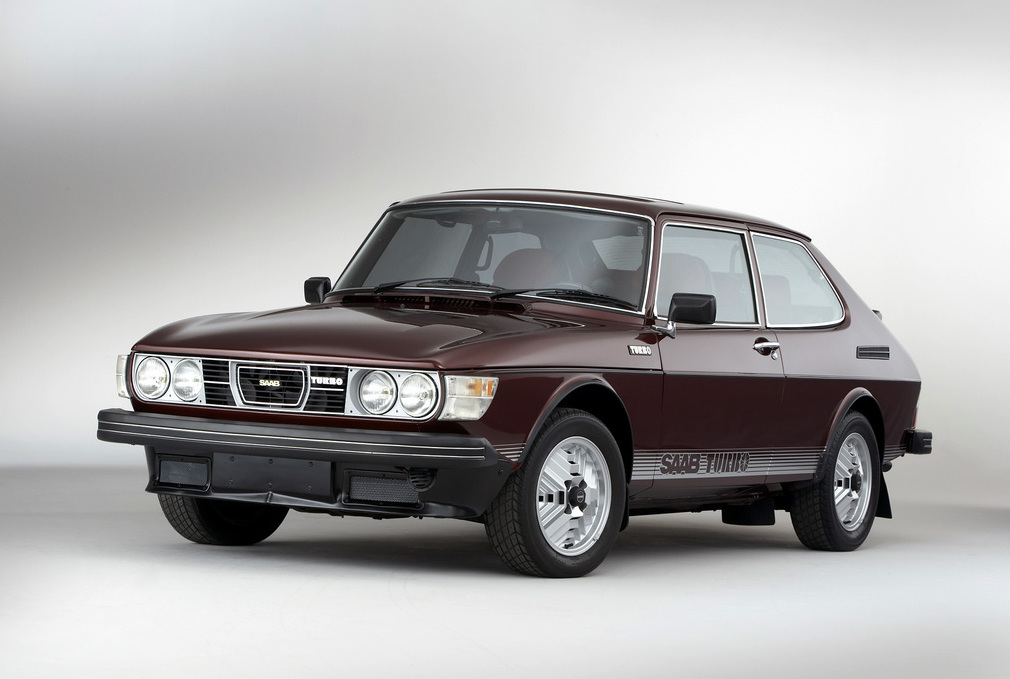
While BMW and Porsche were specifically looking for performance from their specialist turbo models, Saab went down the forced induction route mainly to meet California’s strict emissions limits while maintaining performance without going to the expense of developing a larger engine.
The results were nothing short of sensational, the turbo giving the Saab mid-range acceleration to compete with any sports saloon in the world.
Power in the previously fairly sedate saloon was up to 145bhp, good for 0-60mph in 9 seconds and a top speed of 125mph.
By 1979, more than 10,000 turbo cars had been sold, and the Swedes found themselves at the forefront of an emerging technology that would take the 1980s motoring world by storm.
But the 99 was getting distinctly long in the tooth, and a new model was needed to take advantage of the company’s growing reputation.
Enter the Saab 900
The Saab 900 was based on the 99’s excellent chassis, with a lengthened wheelbase and a longer front end, but it was very much a new car despite also carrying over the 2-litre B-engine.
The styling was more evolution than revolution, but the interior was completely redesigned, with a dashboard based on cockpit design principles – as befits a company that started out making aircraft.
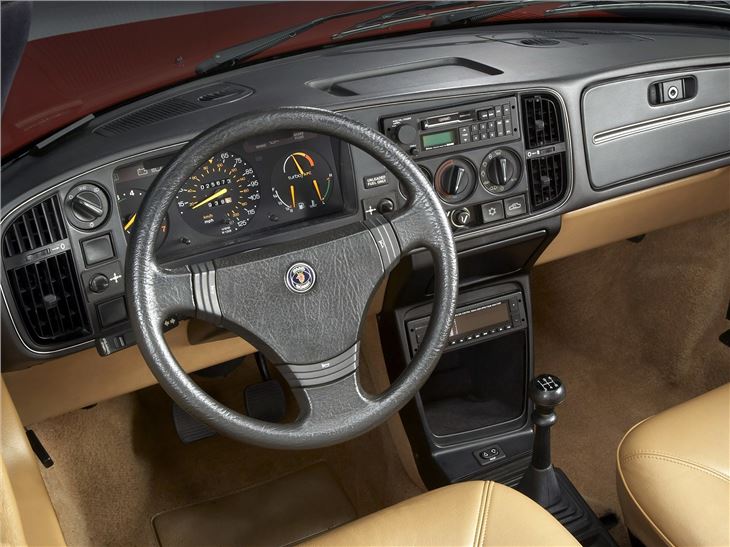
The 900’s otherwise conventional four-cylinder engine was canted at 45-degrees and, unusually for a front-wheel drive car, was mounted longitudinally.
It was also installed backwards, with a transaxle underneath driven via a chain at the front of the car.
The front suspension, refined over several decades of earlier Saab models, featured a double wishbone design, while the rear comprised a typical beam axle design, stabilised by a Panhard rod.
Untypically, the attachment points between the axle and chassis consisted of two Watt’s linkages at either end of the axle – unlike a more common four-link design.
Because of its engine configuration, the Saab 900’s cabin was airy and spacious, with a deeply curved windscreen providing good driver visibility.
Two more features worth noting were the deep-opening doors, which incorporated the sills, and the innovation of heated seats – ubiquitous on today’s executive saloons.
There were four versions of the B-engine available when the 900 was launched in 1978 – a single carb 100bhp, a twin carb 108bhp, a Bosch Jetronic fuel injection version giving 118hp, and the turbo rated at 145hp.
Electrifying 900 Turbo
When it was launched, the Saab 900 Turbo found itself up against normally aspirated rivals with larger engines, like the Vauxhall Royale Coupe, Rover’s V8, and the Lancia Gamma Coupe.
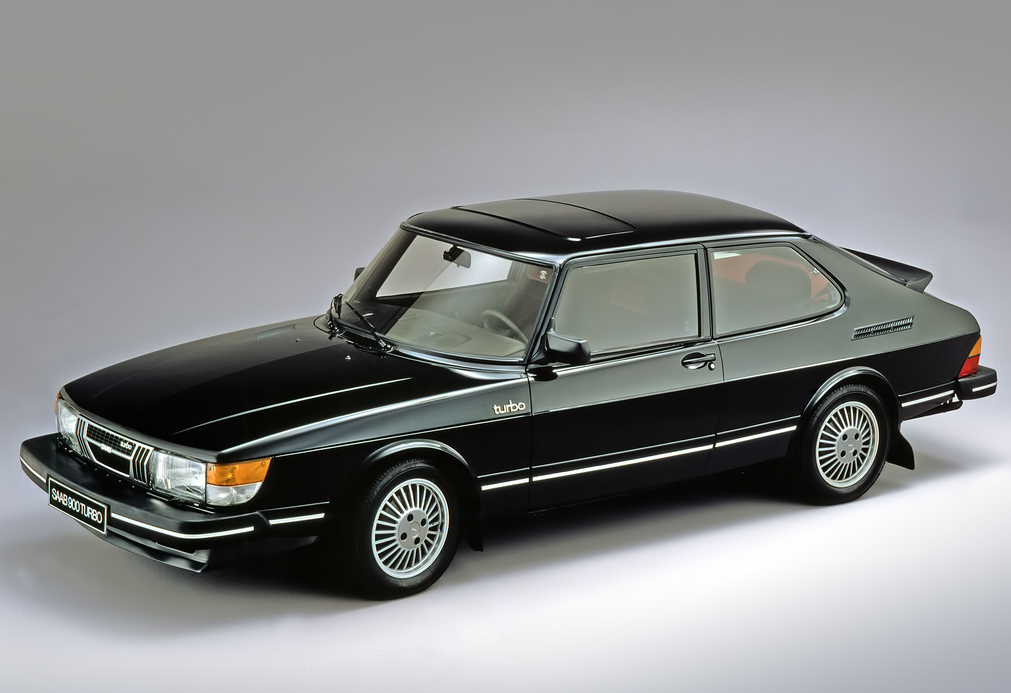
In terms of mid-range acceleration, once the turbo had kicked in above 2,500 revs, it blew them all out of the water.
Motor noted “an exhilarating surge of acceleration that leaves the others gasping” in a group test in 1979, while Car magazine described “the first Swedish car for many years to combine Swedish solidarity and practicality with honest-to-goodness performance”.
“Driven hard, the Saab has electrifying performance,” it wrote. “From about 3,000rpm to the tacho’s warning line at 5,500rpm, the car takes off with energy that increases.”
As with all early turbos, there was a certain amount of lag before the power kicked in, and the magazine warned of “unusual power characteristics which need to be learned”.
“A driver who doesn’t understand where the performance is will find himself often wanting for power, caught in the rev band below where the turbocharger begins to work,” it said. “Equally, he might be caught in a spot where the car starts to take off rather more quickly than intended. “The Saab needs to be understood.”
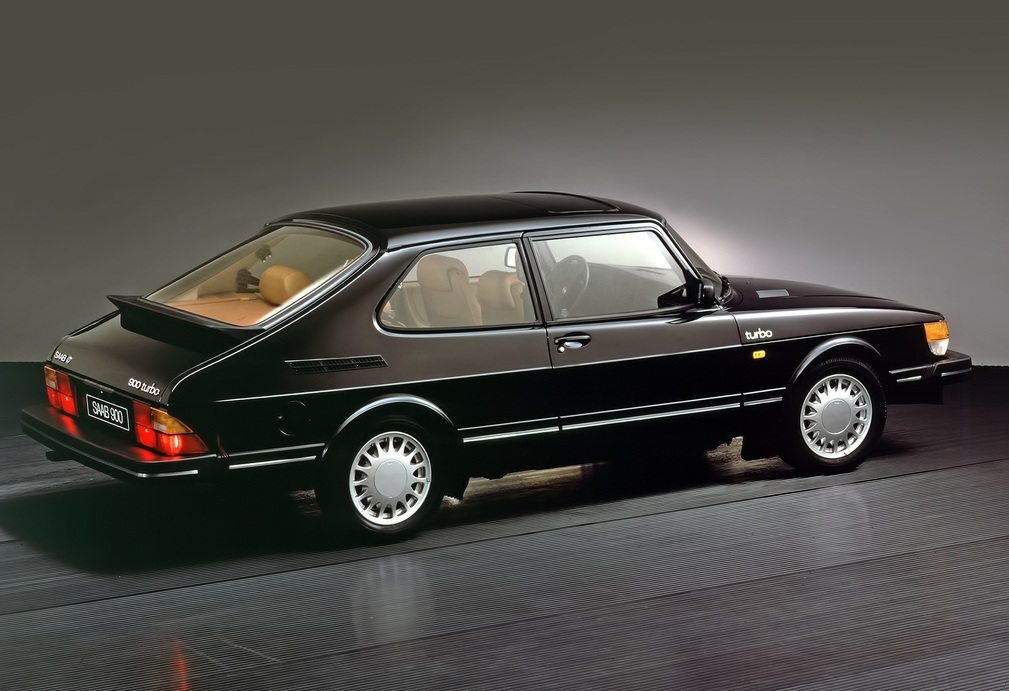
Autocar described the 900 as “a better car, more refined, better behaved, more luxurious” than the 99, which was still available in normally aspirated form until 1984.
It was also more expensive, at £9,961, significantly more pricey than a BMW 323i (£7,399) and an Audi 100GL (£7,915), but comparable with the Royale Coupe (£9,776).
None of those cars, however, possessed the “dramatic” performance of the 900.
“The car pulls away on what seems to be an endless stream of smooth, effortless power which is vastly pleasing – a joyous eruption,” the magazine wrote.
Roaring success
By 1983, Saab led the world in turbocharged road cars, having sold 100,000. But the company that began life building aircraft as Svenska Aeroplan Aktiebolaget didn’t rest on its laurels, continuing to develop and improve the old slant-four engine.
The B-engine became the H-engine, with the distributor moved to the front of the cylinder head and directly driven by the camshaft.
Next came a 16-valve cylinder head with double overhead camshafts, featuring hydraulic valve lifters and Ecopower, with a pre-heated catalytic converter to reduce emissions in the US. The 8-valve engine was still available.
Adrian Flux Classic Car Insurance
There was also Saab’s Automatic Performance Control (APC), which helped control the boost for the turbo and used a knock sensor to allow different grades of fuel to be used without engine damage.
Saab advertised the car as “the Turbo with the brain”, stressing that the company’s use of turbo-charging wasn’t just about power, but the twin goal of extra grunt without worsening fuel economy.
Another innovation was asbestos-free brakes, an industry first, while a convertible version – available with the turbo – joined the four-door and five-door hatchback in 1986.
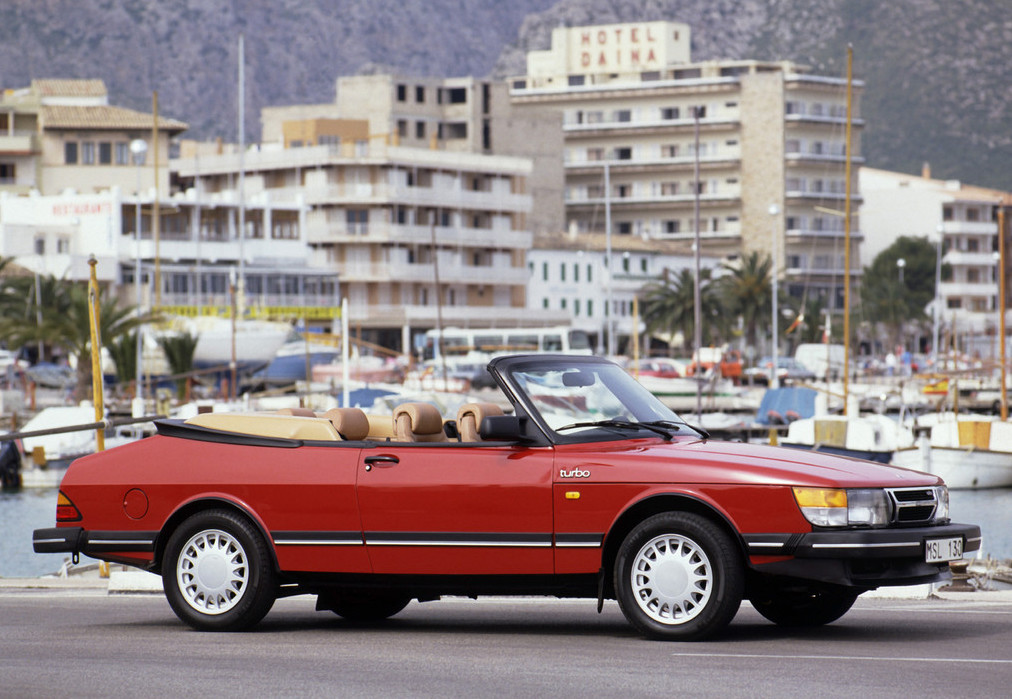
The Turbo 16 Aero featured a special body kit that reduced drag and allowed the car to reach 130mph.
Testing a 175bhp Turbo 16 in July 1984, Autocar praised the smoothness of the engine “by any standards, let alone that of a 2-litre four”.
“As with most turbos, it is from 3,000 rpm onwards that it really goes, and then the acceleration becomes exhilarating, delivered with such excellent smoothness that one feels there is a straight six under the bonnet,” the magazine wrote.
“The Turbo 16 goes most gloriously.”
The intercooled Saab 900 Turbo
The 16-valve Saab was the first to get an intercooler, but it was soon fitted to the 8-valve engine, raising power from 145bhp to 155bhp.
According to Motor magazine, however, it felt like more, even warning Ferrari drivers to “watch out – when it comes to fifth gear pulling power the Saab 900 Turbo is right on your tail”.
It gave the seven-year-old car a new lease of life, although competition was getting stiffer in the shape of the Audi Coupe GT, BMW 325i, and Sierra XR4x4, plus two entrants to the executive turbo market, the MG Montego Turbo and Mitsubishi Galant Turbo.
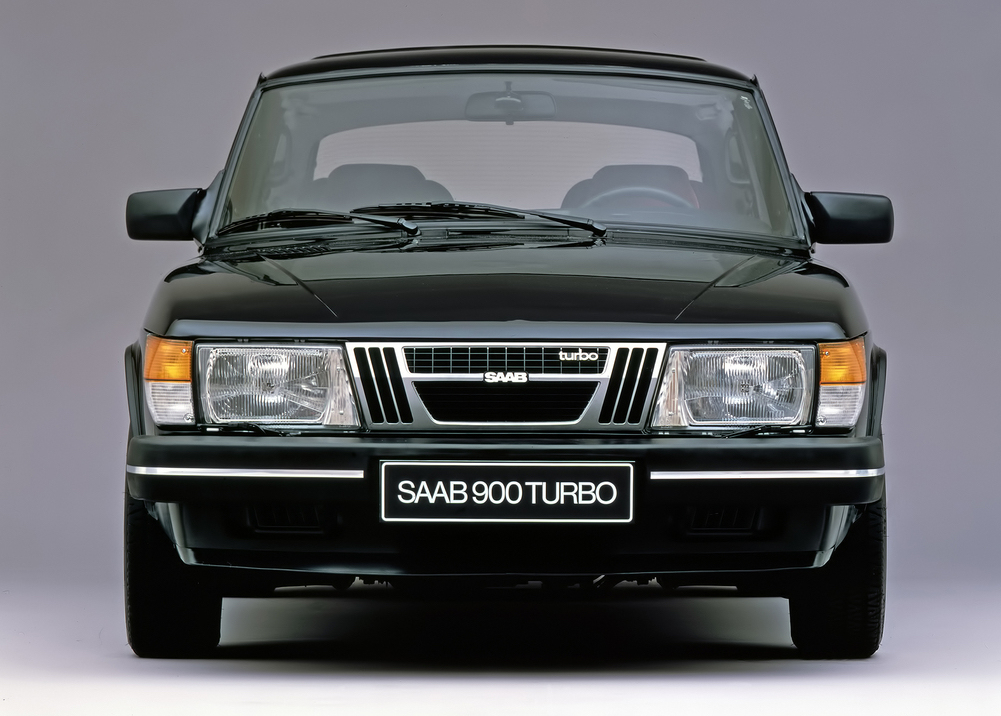
The Montego, in particular, was quicker to 60mph, but “turn your attention to in-gear lugging power and the Saab demolishes the lot”.
For example, in fifth gear the Saab would launch you from 50mph to 70mph in a Ferrari-like 7.3 seconds as that turbo kicked in with devastating effect.
By now, the Saab 9000 was on the market, the result of a collaboration with Fiat and sharing a design similarity with the Fiat Croma and Lancia Thema.
But it didn’t spell the end for the popular 900, far from it.
Saab 900 facelift
The Saab 900 was given a mild facelift for the 1987 model year, with a new grille, headlamps, front indicators, and new bumpers.
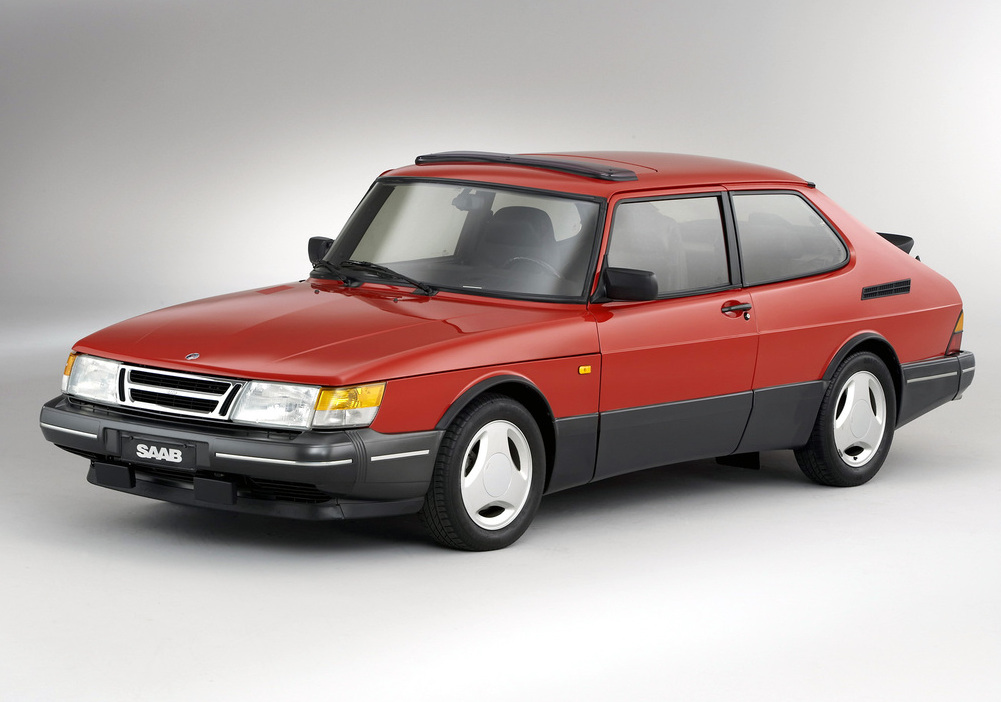
Catalytic converters became available on all fuel-injected models in Europe, as well as cruise control to help lower emissions and improve economy.
The turbocharger was now cooled by water and oil, as opposed to just oil, to help with the unit’s durability, while the 8-valve units were phased out in 1989 and 1990.
Testing among the last of these in February 1989, Autocar and Motor paid tribute to Saab’s ability to keep the same slant-four engine up to date through 18 years of production to that point, while maintaining a path upmarket.
While the now 11-year-old car had its drawbacks – a lively ride, turbo lag on twisty roads, and an interior that was becoming cramped by modern standards – it still offered something different.
“In a market dominated by the efficient and faceless, the characterful 900 stands out,” the magazine wrote. “Quirky looks are part of its lure, but its main draw is solid quality and stimulating performance – an uncommon blend.”
The turbo now came with anti-lock brakes as standard, as well as optional airbags.
The Carlsson 900 Turbo
A number of special editions were produced over the years, and among the most significant was the 900 Carlsson, 600 of which were built for the UK market between 1990 and 1992.
Produced in honour of Erik Carlsson, the legendary Saab rally driver, the three-door hatchback came in three colours, 200 each of red, white and black, with a body-coloured AirFlow body kit and whale tail rear spoiler.
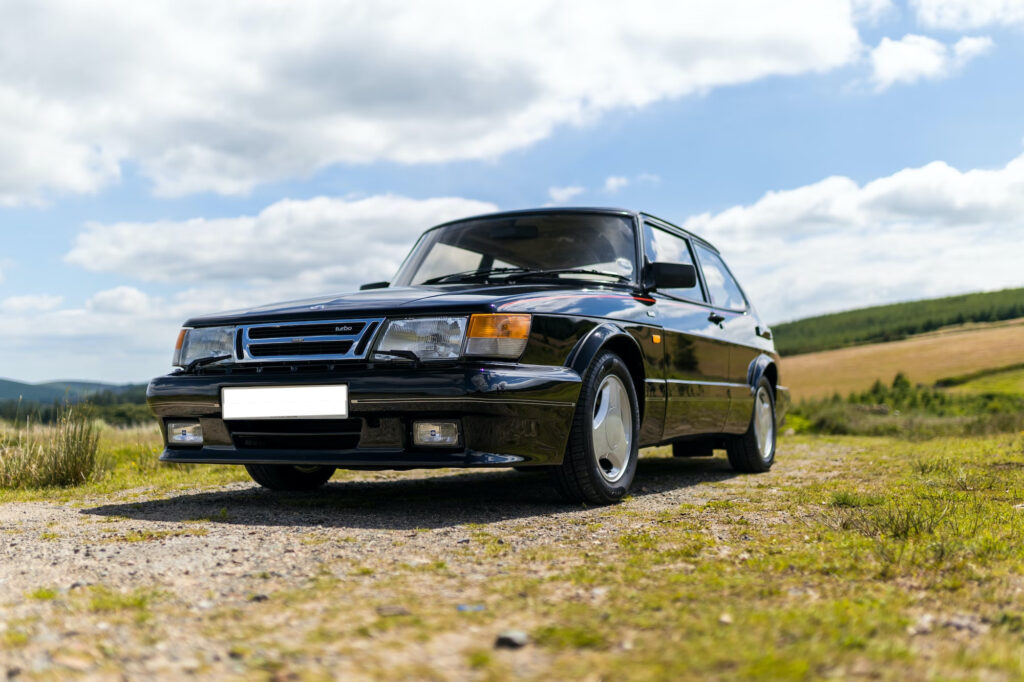
The car also comes with larger, three-spoke alloys, and red exterior lining with Carlsson C-pillar branding, all helping to mark out the car as something special.
An upgraded gearbox helped control the additional power, up to 185bhp, provided by an upgraded APC.
By now, the Garrett turbo had been replaced by a Mitsubishi TE-05, which helped reduce lag and deliver that enormous surge of power more readily.
Also for the UK only, the 900 Ruby, of which only 150 were made, came with the Carlsson engine but no body kit.
Needless to say, they came in Ruby red with colour-coded bumpers and grey alloys, while inside there was buffalo leather with Zegna pure wool inserts in the seats and door panels.
These cars were the last of the “Classic” style 900s sold in the UK.
Like our illustration of the Saab 900 Turbo: Sweden’s champion at the beginning of the article?
Download a free high-quality poster version here.
End of the Classic 900
The “Classic” tag to these first generation cars was obviously applied retrospectively, but to Saab fans they represent the best of the breed before the car was arguably diluted by part owners General Motors (GM), who acquired 50 per cent of the carmaker in 1989.
GM wanted to save costs by basing the new 900, introduced in 1994, on their existing GM2900 platform used in the Vauxhall Cavalier.
Along with streamlined production that slashed 40 per cent off manufacturing time, the “New Generation” car pulled Saab out of the red and into the black.
But while the styling was based on the classic lines, and the turbo remained in the line up, it lacked character compared with its predecessor, and the earlier cars are considerably more sought-after today.
In all, Saab produced 908,817 classic 900s, of which 202, 284 were turbos, and 48,888 were convertibles.


